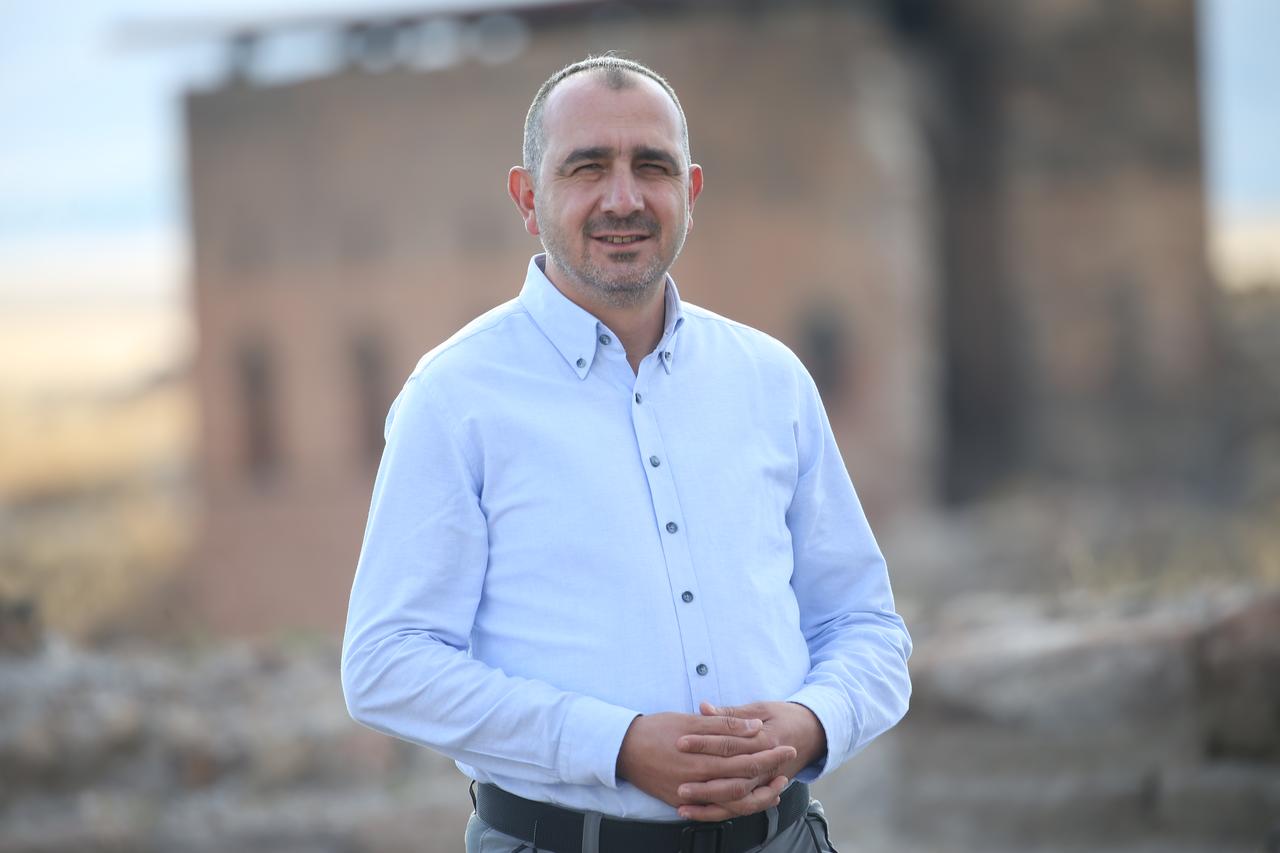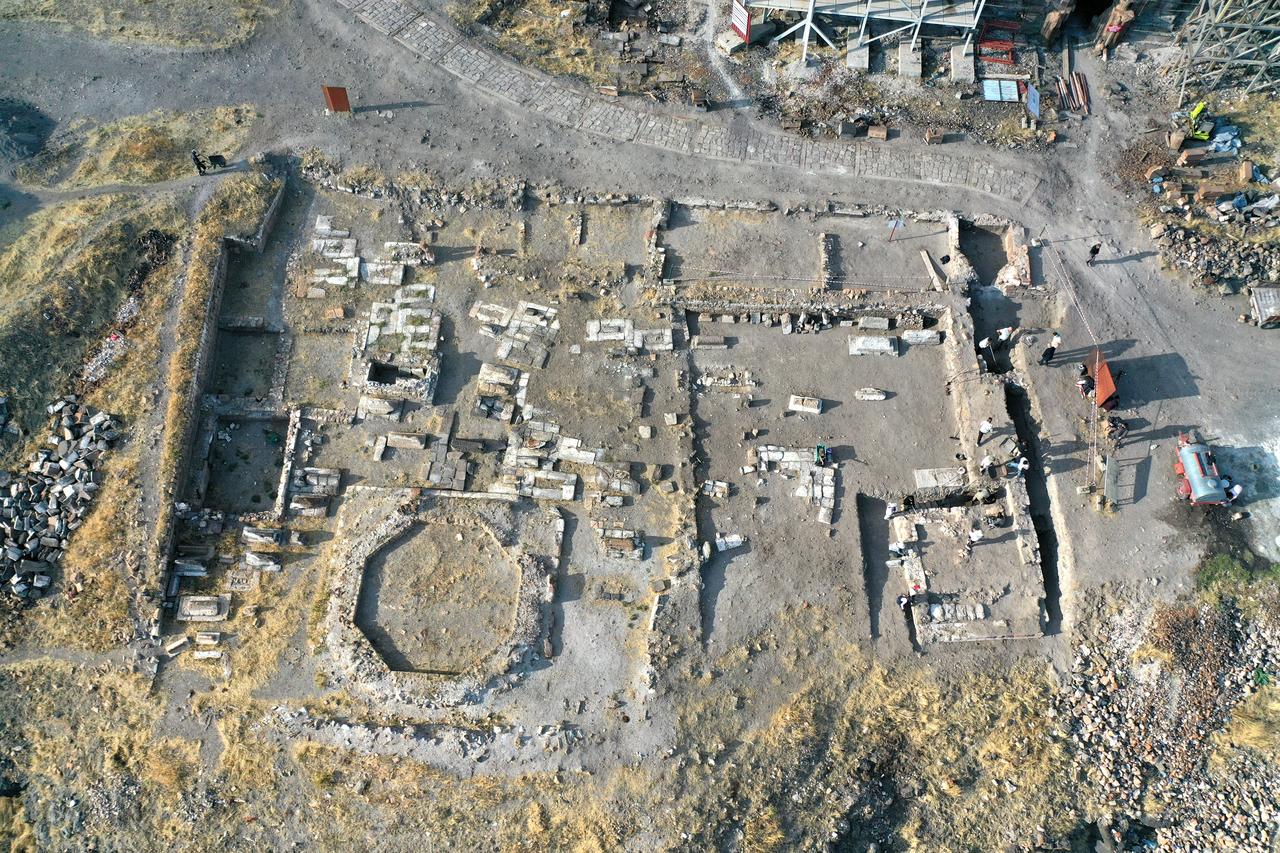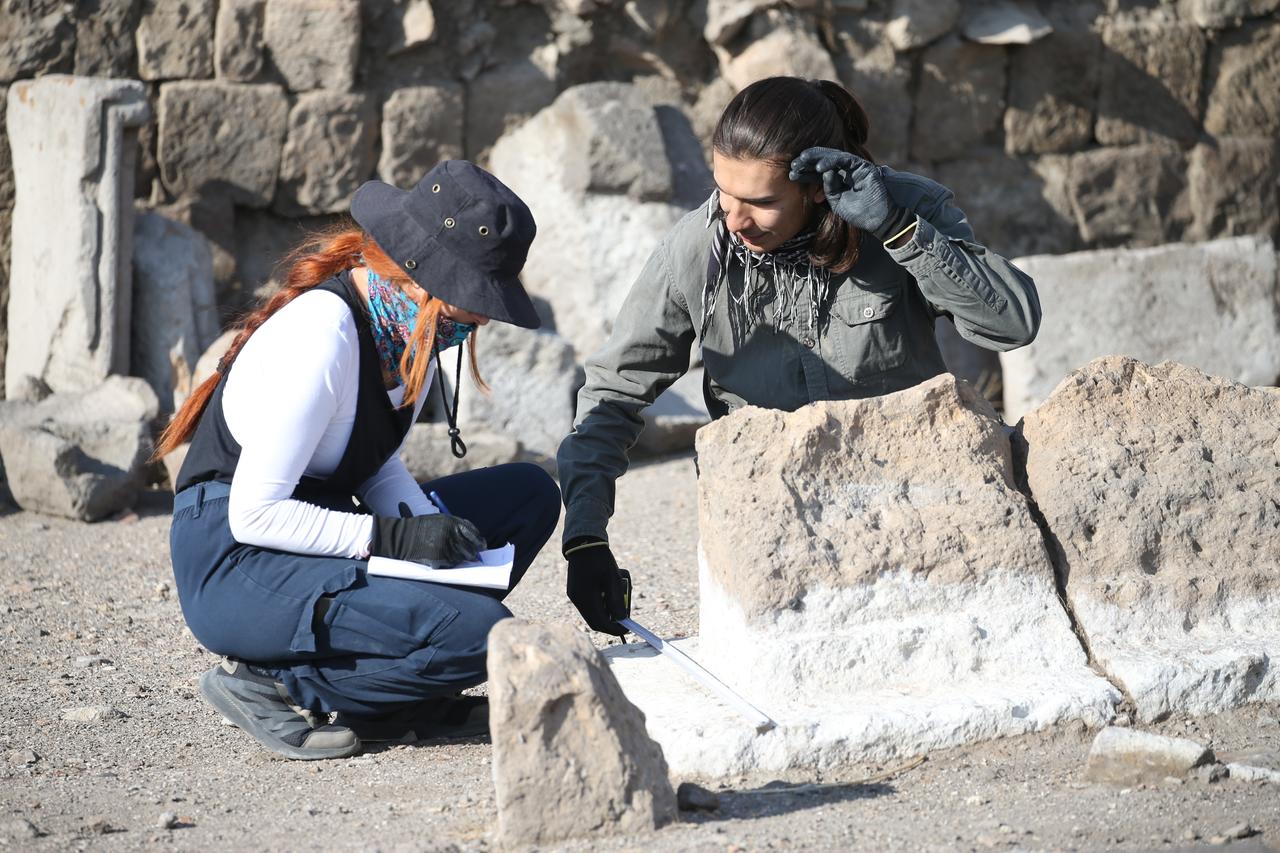
Ani, a UNESCO World Heritage site in Kars, has yielded the remains of a Seljuk-era kumbet—a brick-built tomb tower—during ongoing excavations at five locations designed to bring both immovable and movable heritage to light. The newly identified structure lies in front of the Fethiye Mosque (Ani Cathedral), where, according to historical accounts, Sultan Alparslan led the first Friday prayer in Anatolia after the 1064 conquest.

Excavation director Assoc. Prof. Muhammet Arslan said works, conducted by the Ministry of Culture and Tourism in partnership with Kafkas University, began in April and are planned to continue until the end of December. He noted that one of the most significant areas under study is a Seljuk cemetery about 30 meters southwest of the Fethiye Mosque, which he described as “the first hazire—a mosque-adjacent cemetery precinct—of Anatolia.”
Earlier seasons in the same area revealed a Seljuk kumbet with an octagonal body set on a square base, along with sanduka-type tombstones and akit-type burial chambers known from Central Asian traditions and accepted here in their Islamized form.

This season, teams uncovered further sanduka tombstones and, more importantly, the remains of another Seljuk kumbet with a brick body. Describing its significance, Arslan said, “For the architecture of kumbets in Anatolia, this may be among the very first examples; we could even call it a first.”
He added that the Seljuks, who had used brick for such monuments in pre-Anatolian lands, especially Iran, appear to have erected the initial Anatolian instance at Ani soon after the conquest.
Culture and Tourism Minister Mehmet Nuri Ersoy said the discoveries at Ani represent a milestone in uncovering the earliest layers of Turkish-Islamic architecture in Anatolia. He stressed that every new find adds to the city’s identity as a meeting point of civilizations and reinforces its global importance as a UNESCO World Heritage site.
Ersoy noted that protecting and presenting these structures to the world is not only a national duty but also a legacy Türkiye owes to future generations.

Around 130 specialists—including art historians, archaeologists, architects, and conservation architects—are working to uncover structures and artifacts still buried across the site.
At Ani, long regarded as a gateway between Central Asia, the Near East, the Caucasus, and Anatolia, the remains span the eleventh and twelfth centuries of Turkish-Islamic architecture and reflect a layered past under the Bagratid dynasty, Byzantines, Great Seljuks, Georgian Kingdom, Mongols, Ilkhanids, Karakoyunlu, Akkoyunlu, and the Ottoman Empire.
